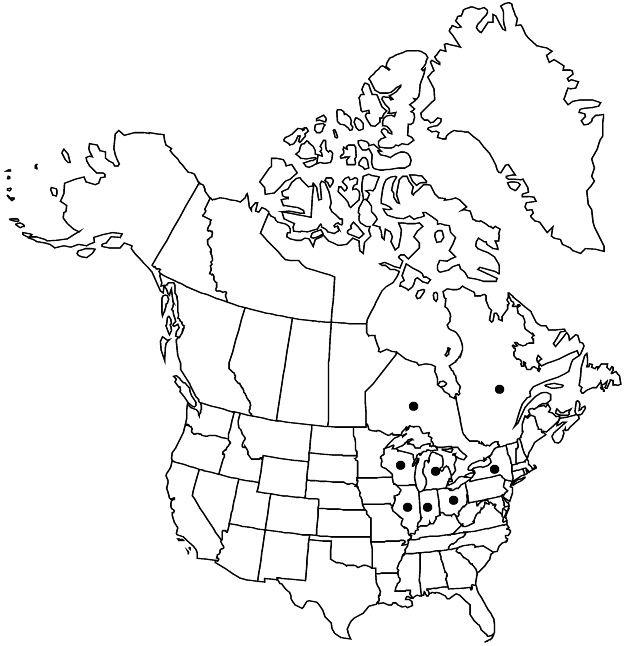Hypericum kalmianum
Sp. Pl. 2: 783. 1753.
Shrubs, erect, forming slender to rounded or flat-topped bush, (1.4–) 2–6 (–10) dm. Stems: internodes 4-lined at first, then terete. Leaf-blades narrowly oblong to oblanceolate or linear, (15–) 20–45 × 3–7 (–10) mm, base articulated, narrowly cuneate to subattenuate, margins subrecurved to revolute, apex rounded to obtuse, midrib with 9–14 pairs of branches. Inflorescences usually (1–) 3–7 (+) -flowered from apical node, rarely with flowers from 1–2 proximal nodes. Flowers 20–35 mm diam.; sepals deciduous, not enclosing capsule, (4–) 5, elliptic or oblong to obovate, subequal, 4–9 × 1.5–5 mm; petals (4–) 5, golden yellow, obovate to oblong, 8–15 mm; stamens deciduous, 150–200; ovary (3–) 5 (–6) -merous. Capsules narrowly ovoid-conic, 7–11 × 4–7 mm. Seeds narrowly carinate, 0.7–1.1 mm; testa subscalariform. 2n = 18.
Phenology: Flowering summer (Jul–Aug).
Habitat: Sandy or calcareous dune slacks or swales, rocky shores, plains and low prairies, along streams, sphagnum-sedge swamps
Elevation: 10–400 m
Distribution

Ont., Que., Ill., Ind., Mich., N.Y., Ohio, Wis.
Discussion
Hypericum kalmianum is a northern derivative of H. prolificum with shorter stems, narrower leaves, fewer and larger flowers, and, usually, five styles and placentae. Natural hybrids with H. prolificum have been reported from Wisconsin.
Selected References
None.